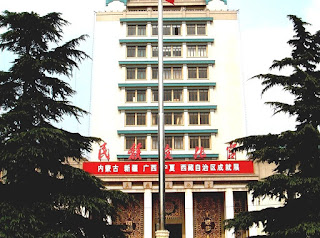The Cultural Palace of Nationalities (æ°'æ—文化宫) is located in Beijing's Xicheng District, on West Chang'an Avenue. It was built in September 1959 and is one of the Ten Great Buildings. It was registered as the first of 55 museums in the city. It consists of a museum, gallery, library, art institute, theater, guesthouse, and other facilities. As a cultural institution, it is under the administration of the State Ethnic Affairs Commission of the People's Republic of China.
Architecture
Chinese President Accompanies Indian PM on Visit to Cultural City - Chinese President Xi Jinping accompanied visiting Indian Prime Minister Narendra Modi on a visit to Xi'an, capital city of Shaanxi Province and Xi's hometown, on Thursday. Xi accompanied Modi...
The Cultural Palace of Nationalities was built by the master of contemporary Chinese architecture Zhang Bo, whose well-known works include the Great Hall, Beijing Hotel, Friendship Hotel and Diaoyutai State Guesthouse. The building's architecture was widely praised when it was unveiled. The building has a construction area of 32,000 m², the main building for the tower has 13 floors, and is 67 meters high. East and west sides are surrounded by wings, stretching north central exhibition hall. House body are white, with peacock blue glazed tile roof eaves decoration. Central Hall 2 entrance letter "solidarity", "progress."
Function
The mission of the Culture Palace is to serve and educate the various minority cultures of the country. The collection of National Culture Palace includes literature and science text books of more than 60 million copies. The basic display for the "Chinese Traditional Culture Series" exhibition, and theater performances will be from time to time various national art. In recent years, the community also to provide exhibition space to other types of exhibitions organized.
National Palace Museum in 1979 has been changed to the National Palace Hall, in September 1997 to restore original name. The museum's collection of cultural relics protection of ethnic minorities in China, of promoting minority cultures. Large collection of arts and crafts, costumes, musical instruments, religious articles show the culture of the Chinese of all ethnic groups, and witnessed the historical development of all ethnic groups.
